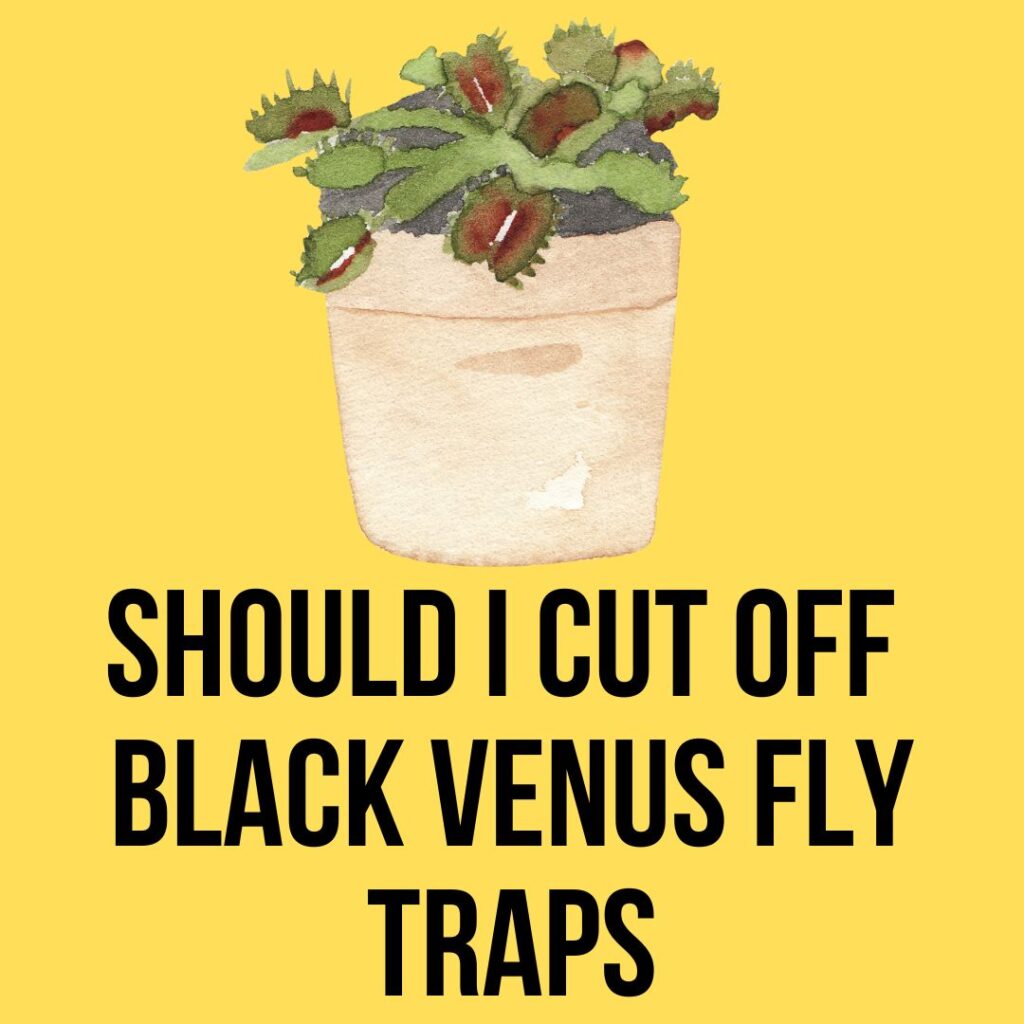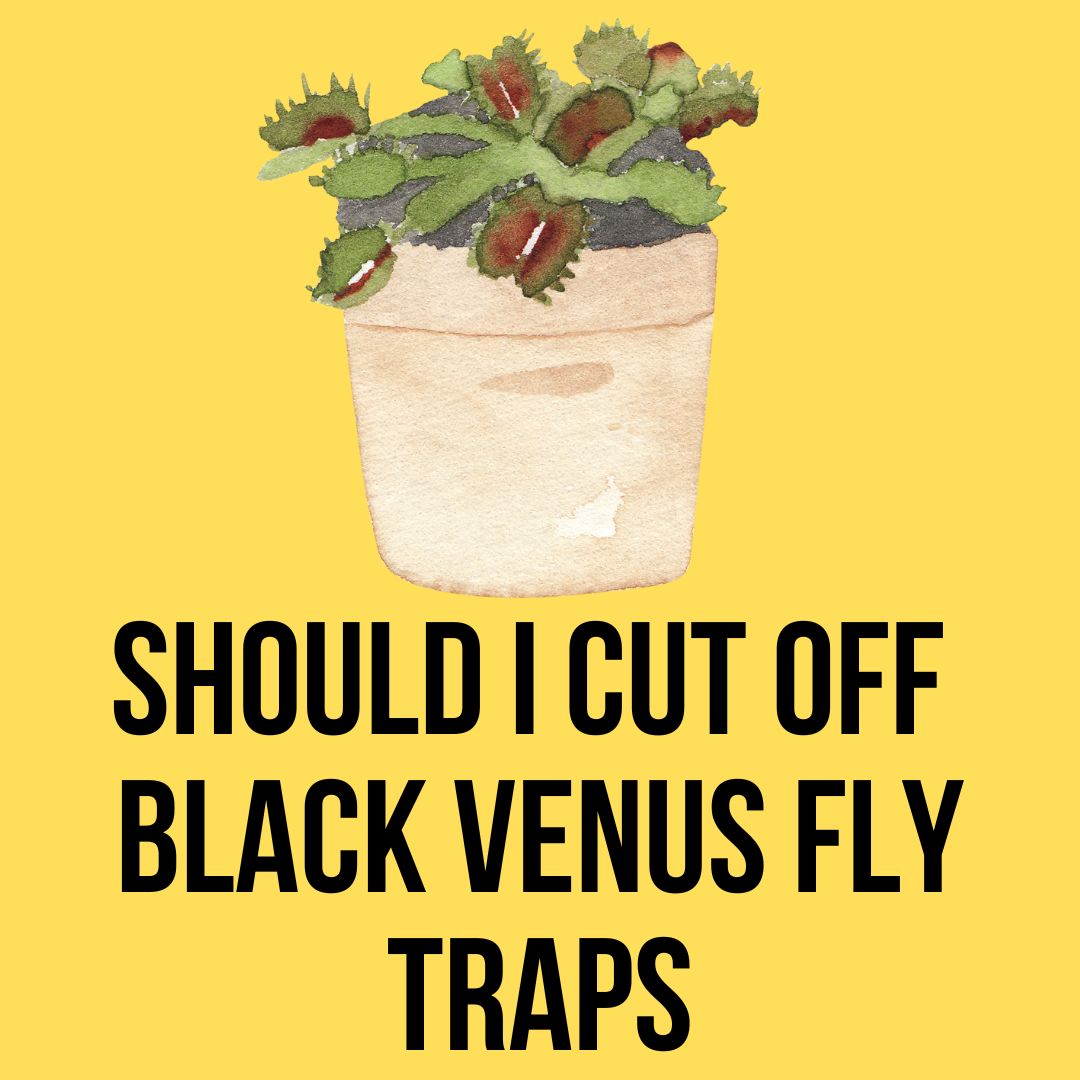Should you be worried about black leaves in your carnivorous plant? Black leaves appear regularly. Sometimes this is a normal process, but other times it is a sign of poor growing conditions. So, should you cut off black venus fly traps? Let’s find out.
The leaves of carnivorous plants grow and wither continuously, this is the life cycle of the plant. However, when several traps turn black, it can be a warning sign! An increasing number of darkening leaves can be caused by poor nutrition, poor lighting, stress, or improper watering, for example.
Natural Causes Of The Life Cycle
The leaves of carnivorous plants do not last forever. They wither regularly to make room for the following ones. When they do, the leaves take on black color and gradually dry out. This natural process can take several days or even weeks!
Sometimes a leaf of a carnivorous plant turns black under completely normal conditions. If you haven’t made any careless mistakes, you may have nothing to worry about.
The leaves of carnivorous plants open and close a limited number of times before they wilt. This process is completely normal. Each trap has its own rhythm, they can open and close five to ten times before dying. When the leaf begins to blacken, a new trap should point to the tip of its nose.
All of your plant’s traps will go through this process. So don’t be stressed by every black leaf!
But if you notice that several leaves are dying off and the plant isn’t producing enough new ones, there could be a problem.

Some important causes
Unsuitable Diet
I understand how exciting it is to feed a carnivorous plant trap! The feeding process is beneficial for your plant, and also for you: The traps receive additional nutrients, and humans get excited to observe such an elaborate mechanism.
The problem is that we are sometimes too greedy. Some owners of carnivorous plants get so excited by the trapping mechanism that they kill their plants themselves thinking they are doing the right thing.
Bad Food
You can feed your carnivorous plant live insects or dead insects. Traps consume a wide variety of insects and arachnids. On the other hand, do not feed your plant with food “for humans”, such as raw meat, sweets, fruits, and vegetables… These plants have evolved to consume insects and are not able to digest anything else. . The plant tries to digest the human food you give it to survive but it will fail 100%.
The carnivorous plant spends a lot of energy trying to digest this food, only to give up. She then lets the trap wither to save the others.
Incorrect Prey Size
It is enough that the prey given to a trap is too large for the carnivorous plant to be able to consume it. Seeing that the trap fails to digest this oversized prey, the plant will leave the trapped black and wither. A rule of thumb is to only use insects that are ⅓ the size of the trap. If you can’t find any, cut them into pieces before giving them to your carnivorous plant!
The insects you feed your plant are just a bonus to boost their nutrition. In truth, you don’t really need to feed them giant insects for them to survive. For information, insects are very nutritious and a single ant can provide enough nutrients for the month!
Light Problem
Like many plants, carnivores need plenty of sunlight to thrive and evolve. Ideally, they would even need 12 hours of sun per day. We know that in most of our apartments, we are far from it! If you notice that your plant receives less than 4 hours of light per day, be careful! It is very insufficient for her. The traps will not die immediately, but they will be very weakened
If you see your plant’s colors fading, or even if the leaves are catching “black edges”, you will need to add more lighting time to your carnivorous plant. In this case, do not hesitate and get artificial lighting to compensate for this lack of light. Reserved for specialists a few years ago, they are now very widespread, at all prices and all configurations.
Improper Watering Technique
Unlike many plants, most carnivorous plants, such as Venus fly traps, love humidity and like their soil to be constantly moist. On the other hand, they are much more fragile than a “simple” geranium, there is no question of watering them with tap water, reverse osmosis water, or mineral water… Use rainwater or distilled water, because tap water, for example, contains minerals that burn the roots of carnivorous plants.
Using the wrong water, or watering too little your carnivorous plant deteriorates its traps quickly by drying them out. These causes can cause the famous “black traps” and kill your plant quickly
Should I cut off black venus fly traps or not?
It’s up to you if you want to cut a blackened trap or not. It brings benefits to withdraw them in general, but it is totally optional. If you want to remove it, always wait until the trap is completely blackened and withered.
The only exception to this rule of waiting for a trap to end completely is if a dead insect is inside the trap dying. It can happen! In this case, cut the trap containing the insect when it wilts for two reasons:
The dead insect can attract bacteria or mold to your carnivorous plant
The decaying dead insect mixed in the trap may bring unpleasant odors
In nature, plants produce a lot of snares which also turn black very quickly. The difference is that in nature, the soil is much richer in life, and the traps break down very quickly, ridding the plant of this dead weight. In a pot, decomposition takes several weeks or even months.
Here are the positive points to removing the dead traps
- Slightly improves the vigor of the plant: the dead leaves can, in the long term, cause weight to the plant. Removing them allows him to focus on the other living traps.
- Improve aesthetics: Some people don’t like to see stems or leaves “to evacuate” in their plants, and for aesthetic reasons prefer to prune quickly. This helps to highlight the traps too.
Avoid dead trap carpet: If too many dead traps carpet the substrate, it can prevent new leaves from popping their noses.

How to cut off black venus fly trap leaves?
The rule that never changes is to use a small, sharp pruner to cut cleanly. It must always be clean and disinfected between each plant so as not to contaminate anything. Here are some tips for cutting dead traps properly.
Cut the stems as close to the substrate as possible.
Never pull dead traps at the risk of tearing off part of the roots and unnecessarily weakening your plant. In addition, on a young pot, you risk uprooting the whole plant!
As far as possible, do not activate the other traps… Be patient! It would be a shame to create more dead traps for this reason. If it’s unreachable without hitting the others, I recommend dropping it this time.
Kill two birds with one stone by cutting several blackened traps at once to limit the risk of touching other traps in addition to causing stress to the plant with each cut.
Conclusion
Carnivorous plants seem very sensitive compared to other common green plants, but that’s just changing the way you think about plant care. They are totally different. Once you have their specificities in mind, they will have no more secrets for you and you will be able to manage problems as soon as they appear!
So take into account that a disturbance can be of a natural cause like the normal life cycle of a trap or because of the winter rest period, but also because of unsuitable care. Observe how you feed it and especially at what rate, check that the brightness is sufficient, in which case investing in horticultural LED lighting.
Make sure that the rhythm and the way of watering your plant are correct and that the substrate that hosts your plant is suitable. Remember that carnivorous plants in general do not want enriched soils. Also, be careful not to wear your plant out by straining it too much, producing unnecessary stress. Finally, regularly inspect your plants to check that pests or fungi are not taking hold
